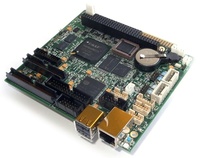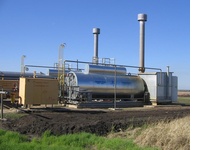28.05.2015
Crude oil is a product that is rather difficult to transport via pipelines due to the reason that it has a high viscosity level — the speed in this case would be low, therefore the throughput capacity would be low too. In order to increase the speed of feedstock movement inside the pipes, it should be diluted. One of the most efficient and cost-effective way to do it is to heat the crude oil, in which case the fluid viscosity becomes several times lower. This helped to solve one of the problems of crude oil transportation.
During the gas decompression process, due to the gas expansion, its temperature is reduced significantly. In which case, it could lead to appearance of frost and freezing of gearboxes and especially operation control panels, integrated into gas pressure reduction stations of the first level (high pressure). For ensuring trouble-free operation of the stations, before the decompression process, it is required to heat the gas to such a temperature that after such a process, the temperature would remain within the limits from +5 to +10 °C. One of the most often used methods of natural gas heating in the stations is the use of continuous-flow heaters using fluid as a heat transfer agent.
The #PROINTEK hardware and software package is made to automate crude oil and gas real-time heating control processes, as well as to improve performance characteristics of the equipment.
 The system is implemented on the basis of MicroPC processor Module CPC150*** from Fastwel (the module has been updated up to СРС152).
The system is implemented on the basis of MicroPC processor Module CPC150*** from Fastwel (the module has been updated up to СРС152).
The system based on Fastwel CPU board performs functions of controlling gas burners of various types, maintaining temperature of the heated products, providing safety functions, practicing emergency operations and remote control. The heater control systems enable to unify design and software solutions, as well as to simplify adjustment of currently working equipment during its subsequent operation and modernization.
The control system has a convenient graphics interface for displaying current state of the controlled object and performing adjustments. Communication with the upper level of the process control system is carried out via RS-485 interface.
 The heaters are launched in automatic mode as follows:
The heaters are launched in automatic mode as follows:
- Preliminary ventilation of the furnace unit;
- Ignition of the pilot burner;
- Ignition of the main burner in the low-burning mode;
- Warming the furnace unit in the low-burning mode;
- Switching to the standard operating procedure.
Normal operation mode ensures the two-step control of the heated crude oil temperature with indication of the current and set temperatures on operator’s panel screen. The control set can operate with analog or digital temperature sensors.
In addition to control block, the control system includes a power supply unit and a set of connecting cables.
The control system ensures safety shutdown of the controlled object by cutting-out the supply of fuel in case control parameters go beyond the acceptable limits. In such a case, an emergency sound alarm will be activated and a message with a reason for such a cutout will appear on operator’s panel screen. Information on the reason will be saved and maintained until manual reset of the emergency shutdown mode. After emergency shutdown, the controlled object will not be able to restart automatically.
In test mode, it is possible to test and set parameters of sensors and actuation devices. The mode has protection against unauthorized access to control block parameters.
The control system continuously operates on a 24-hour basis and meets the requirements, imposed to multichannel repairable and restorable systems.

.png)



















 The system is implemented on the basis of MicroPC processor Module CPC150*** from Fastwel (the module has been updated up to
The system is implemented on the basis of MicroPC processor Module CPC150*** from Fastwel (the module has been updated up to 

